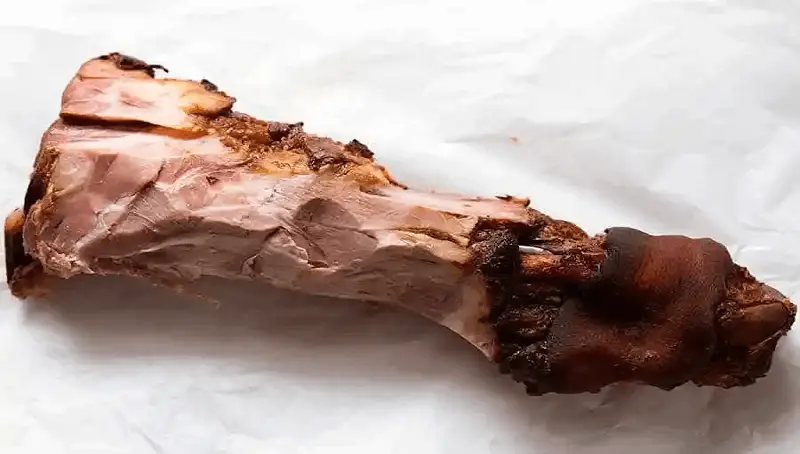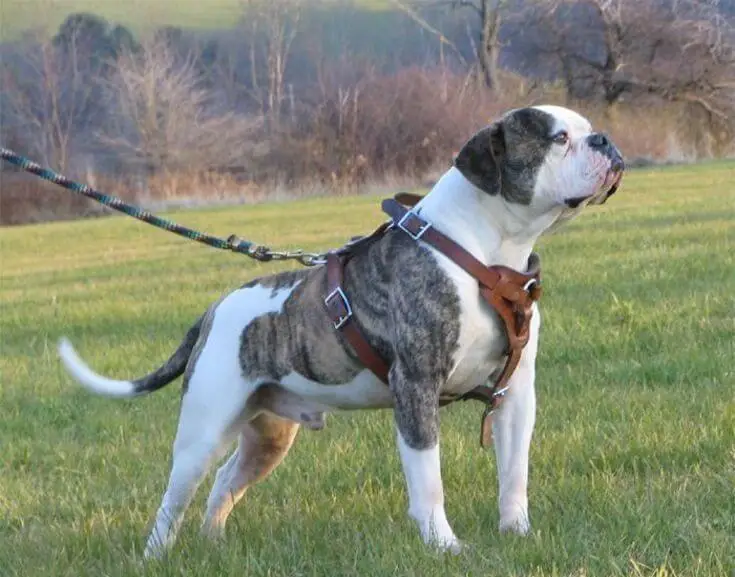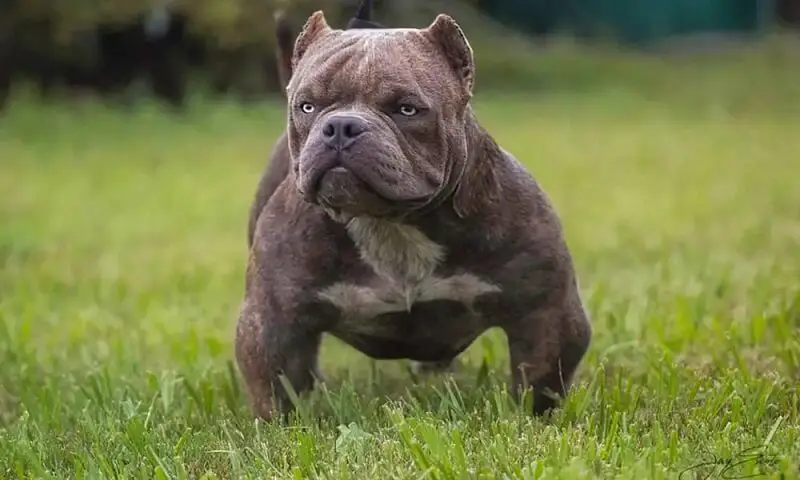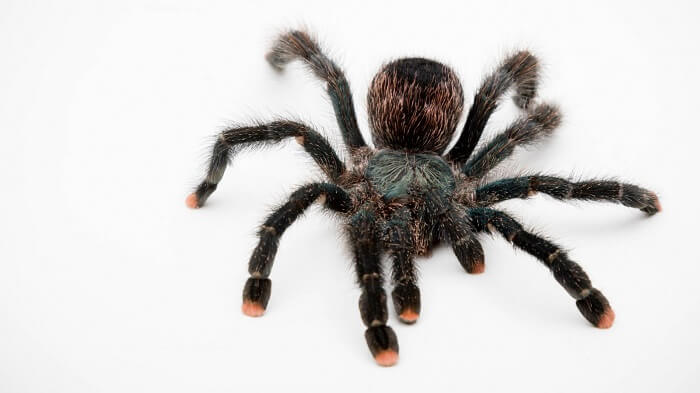I`m sure it has happened lots of times for you to eat a delicious ham for dinner and then think about giving the bones to your dog. But should you? Well, it turns out you should never give bones from ham to your dog!
Give this article a read to understand exactly why dogs can’t eat ham bones and why you should opt for other foods instead.
A supervised diet
You should always treat dogs as big babies. This means that you will always have to be careful what and how much you’re feeding them. When a dog receives a bone it will not know when to stop chewing on it. The bone might cause injuries to its gums, tongue, or the inside of the mouth when it breaks into pieces so if the dog has had any bones, you should really keep an eye out for any discomfort or bleeding. If you notice any signs of pain or discomfort or things don’t look just right, you should take your pet to the vet, but only after throwing the bone away from the dog’s sight.
You might also like my articles on whether dogs can eat spicy food, chestnuts, or Alfredo sauce.
But TVs have taught us that dogs always chew on bones, right? Although we’ve seen a lot of shows, movies, and cartoons portraying dogs eating bones, recent studies done by the FDA have proven that this is yet another thing that TVs have gotten wrong. According to Carmela Stamper, D.V.M. at the Center for Veterinary Medicine, Food and Drug Administration, although people think there’s nothing wrong in giving big bones like those from a roast or a ham to dogs, these are very unsafe regardless of their size.
It might only take a bone for your dog to need urgent consultation at the vet, emergency surgery, or even worse. It gets to the point that the FDA is warning people to keep ham away from their dog’s reach and make sure that the pet doesn’t have meat without first checking it for bones.
Why it isn’t a good idea to feed ham bones to your dog?
When giving your dog bones coming from either cooked or raw ham, you should also prepare for a possible visit to the vet. Ham bones are known to be very frail and will usually break a lot quicker than those from other types of meat. If your dog either breaks the bone in its mouth or swallows a piece of the bone, this can cause injury or an internal obstruction that can become fatal really quickly. Feeding your dog bones from ham or other meats can lead to other health problems, as shown below:
Your dog might break its teeth if it chews on a strong bone too hard. You might think that going to the dentist as a human would be expensive but wait until you find out how much it will cost to treat your dog’s broken tooth. While your dog is working on swallowing the bone piece, it might get stuck in its food pipe. This can lead to vomiting, gagging, and an agitated dog, or even worse!
If parts of the bone will reach the dog’s windpipe and get stuck there, this would be considered a medical emergency because your dog will have a really hard time breathing. This should warrant an immediate visit to the vet.
If your dog swallows a bigger piece of bone but this piece is too big to pass through the stomach, you will also have to take the dog to the vet for an endoscopy and in some cases even surgery to get that bone piece out.
Eating bones can also lead to constipation. Although this condition is easy to detect and cure, it is rather unpleasant for the dog. The most obvious sign of constipation is an impossibility of passing stool. This is due to the calcium content of the bone, which would harden the feces of the pet. In extreme cases, this too can get you with your dog at the vet’s office.
Your dog might also suffer from mouth, tongue, or gum injuries from sharp bone splinters. These will cause a lot of blood to come out and will be really painful. They will translate in a visit to the vet if the splinter doesn’t get out on its own.
Even if the stomach let the bone pass through, what about the intestines? If the bone piece gets stuck in the intestines, this is a really serious problem that will require immediate surgery.
A less serious problem but still one you should know about is pieces of bone getting stuck around the lower jaw of the animal. This is painful for your pet and might even need the attention of a vet if the bone piece doesn’t get unstuck by itself.
Another issue you should keep in mind is blood in stools or around the bottom of the dog. If you notice blood in these areas, don’t waste time. Go to the vet because it might mean an internal injury that can become a severe, life-threatening issue.
Peritonitis is a serious condition that happens when bone pieces will create holes in the dog’s intestines or stomach, enabling bacteria to infect the area. This is another issue that can become fatal.
Eating ham bones might also cause your dog to develop pancreatitis, which is basically an inflammation of the pet’s pancreas. This is mainly due to the fact that ham has a lot of fat and all that fat will put pressure on the pancreas. Ignored for enough time, this condition can become fatal.
I would also talk about bloating issues. Although these don’t sound serious, they can transform into severe problems if ignored for too long. The high salt content from the ham and the ham bone will cause the dog to dehydrate, which would make it drink too much water and get bloated and full of gas. More severe cases can even have your dog get a twisted stomach.
These are just some of the health problems you might have to deal with if your dog were to eat bones. And I`m not talking only about ham bones. almost all types of bones are just as bad.
Some safer alternatives to bones
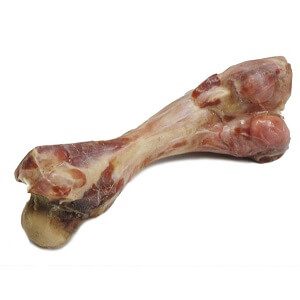 A good substitute for bones is nylabones, made entirely of nylon. Also, rawhide bones will work pretty great as well.
A good substitute for bones is nylabones, made entirely of nylon. Also, rawhide bones will work pretty great as well.
A lot of experienced dog owners also prefer to give their dogs dental bones or dog chews instead of real bones from animals.
If you can’t be convinced not to feed your dog with natural bones, then you should at least go for softer ones, like those coming from chickens. You can also try to find bones that still have plenty of meat on them so the dog gets full and stops chewing before reaching the hard part of the bone.
You should also try to understand if your dog prefers to just munch on things or is an actual chewer. Depending on what your dog likes, you can then decide on the actual texture and size of the bone that would work best for it.
Never let your dog alone with a bone. Keep it in check and make sure you throw the bone as soon as the dog seems to have gotten bored of it or it has caused the animal any type of discomfort.
it’s better to visit a vet to figure out the best bone type for your dog than to be forced to visit them in an emergency situation because of something that went wrong.
The article above should be enough for you to understand whether your dog can eat either cooked or raw ham bones and how safe they really are.
